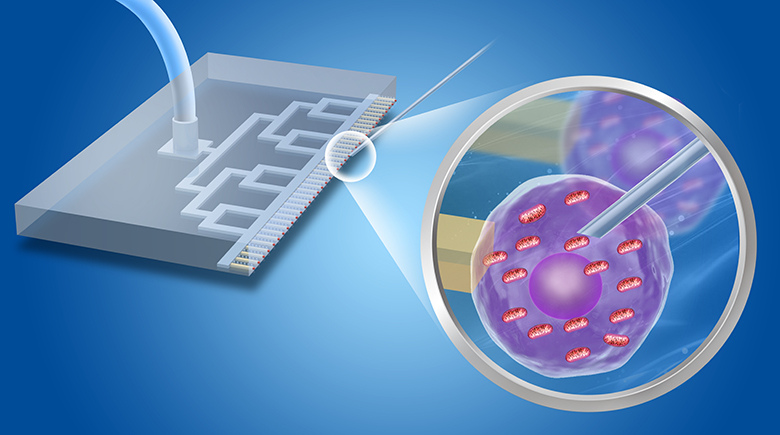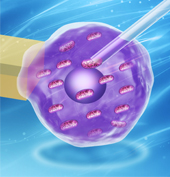
Studies on bulk tissues only provide a statistical average of several actions taken place in different cells. Single cell investigation may disclose further important and in-depth information. Single cell surgery such as manipulation or removal of subcellular components or/and organelles from single cells is increasingly used for the study of diseases and their causes in precision medicine.
Single-cell, organelle-level surgery of small cells (≤20 µm) is limited by the complexity and accuracy of relative positioning of organelles and microneedles. Therefore, a robotic single-cell organelle biopsy system is developed for small cells. The developed system is capable of performing completely automated single-cell biopsy tasks, including cell positioning, organelle detection, aspiration, and organelle release, at a specific location. The cells are patterned with a microfluidic device, and an image processing algorithm is developed to automatically detect the position of the desired organelles inside the cell. A position control algorithm is used to drive the microfluidic device toward a micropipette, and organelle extraction is then performed in an automatic way. A sliding nonlinear PID controller is developed to enhance the manipulation accuracy and robustness of biopsy process. The developed robot-aided system was applied on small single cells to perform single-cell organelle biopsy. Experiments were successfully conducted on small suspended (NB4 ~18 µm) and adherent cells (HDF ~20 µm), in which the mitochondria and nucleus were biopsied using the proposed system and methodology. The experimental results have shown that the developed system can automatically perform organelle extraction with high precision and repeatability, thereby reducing human fatigue and error involved in complex single cell biopsy procedures. The presented single cell organelle biopsy system can be further implemented to perform mitochondria transfer and injection, somatic cell nuclear transfer, cell injection, preimplantation genetic diagnosis and cloning. Development of high-precision systems and micro–nano tools that can manipulate and interrogate cell organelles and components would allow us to further develop new therapies, understand cell dynamics, cell component functions, disease mechanism, and much more.

